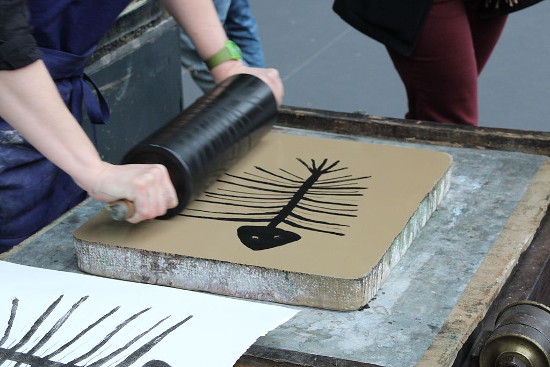Invented in 1796 by Alois Senefelder, the German author and actor; Lithography refers to artwork or printing text onto any suitable material or paper. Originally used as an image since drawn with fat, oil or wax on the surface of lithographic limestone plate since moistened involved etched areas that retained water and an oil-based ink that was applied. Still in use this method of printing is popular in fine art printmaking accomplishments.
Specific aspects – Following significant features highlight important insights into litho printing:
-
Lithography principle – This ancient old method of printing involves certain chemical processes for creating an image wherein its positive part is a water-repelling thing (hydrophobic) while the negative one involves water-retaining (hydrophilic) substance. The ink adheres to the positive image while the water is helpful in cleaning the negative image. Longer and more detailed print is possible as compared to the older physical printing methods.

-
Lithography on limestone – Mutual repulsion of oil and water helps the image to be drawn on the surface of the print plate involving a fat or oil-based medium like a wax crayon that can be pigmented for making the drawing quite visible. The pores of the stone are penetrated by the gum solution that surrounds the original image with a hydrophilic layer and the printing ink is not accepted. Excess of greasy drawing material is removed with the help of lithographic turpentine. The stone remains with water during the printing process and the layer of gum attracts the water. The greasy ink is repelled by the water but it is accepted by the original drawing material. The stone and paper are run through a press that involves application of even pressure over the surface. The ink is transferred to the paper as well as off the stone.
-
Modern lithographic processes – Recent years have witnessed use of high-volume lithography for producing maps, posters, newspapers, books and packaging etc.; involving any smooth or mass-produced items with graphics and print on it. Most of the books and different types of high-volume text involve printing with the help of offset lithography. The modern times have seen many technical refinements and innovations in the printing processes and presses. Multi-color images in one pass on both sides of the sheet are possible. Modern presses are able to accommodate continuous paper rolls, better known as web presses. Continuous dampening system is another great innovation of litho printing technology. Delta effect or the vario are the current dampening systems that are helpful in slowing the roller that is in contact with the plate. It creates a sweeping movement over the ink image for cleaning impurities, also called as hickies.
-
Microlithography v/s nanolithography – These two terms refer to the lithographic patterning methods that are able to structure material on a fine scale. Microlithography refers to features that are smaller than ten micrometers while nanolithography involves features as small as one hundred nanometers.
Lithography has become much popular as regards artistic medium. Prominent artists like Delaxcroix and Gericault have adopted lithography while London also became a center for this printing method.



